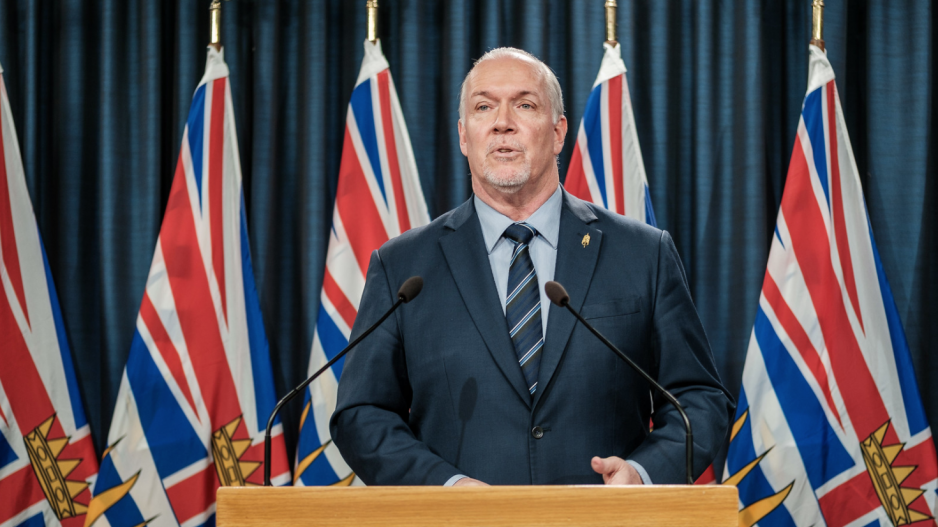The B.C. government plans to spend an additional six weeks consulting the public on how to spend $1.5 billion that it has set aside to help with "stimulus and recovery" from the COVID-19 pandemic, Premier John Horgan announced June 17.
His government in March announced a $5 billion commitment to meet needs arising from the pandemic, including $3.5 billion that is already being provided to B.C. residents, and businesses.
It has not determined how it will spend the remaining $1.5 billion despite what Horgan said has been more than 1,500 "outreach sessions," with business executives, labour leaders, community organizers and others. In total, government representatives have spoken with more than 20,000 people, he said.
B.C. has about 314,000 people who are out of work, and many businesses are struggling to survive – something that demonstrates clear financial need. With about 90% of job losses in the service sector, which disproportionately employs women and youth, Horgan said those demographics have been hardest hit.
Still, he defended not spending all of the money his government has set aside for stimulus and recovery, and instead getting more feedback, because "stimulus in a time when you're asking people to stay home is poorly spent resources," he said.
Horgan hinted that much of the $1.5 billion in future spending could be spent to encourage tourism.
"Destination British Columbia's plan for tourism, domestic tourism this summer, is not well spent if we have not yet come to a place where we can lift travel restrictions," he said.
Provincial health officer Bonnie Henry had said that she did not want British Columbians to be travelling around the province at least until there have been at least two full incubation periods for the COVID-19 virus, or 28 days, after the May 19 Phase 2 reopening of sectors of the economy, such as hair salons and nail bars.
The province has now gone beyond that time period, but Henry said on June 15 that lifting restrictions may not begin this week. Then again, "maybe" they will. The determining factor will be data.
The three main ways that the B.C. government plans to interact with residents to get ideas and set priorities are:
•online surveys;
•responses to a report named Building B.C.'s Recovery, Together: Have Your Say; and
•virtual town halls.
"This is not about waiting another six weeks," Horgan said. "This is about six more weeks of discussions with British Columbians. We have been investing in every aspect of the economy, including tourism. We have a Destination BC advertising plan ready to kick off. We've been engaging with tourist operators, whether they be eco-tourist operators on the Central Coast, whether it be the Butchart Gardens here in Victoria. We've been talking to people about how can we maximize the benefits in this extraordinary time."
While Horgan said that his government is having regular conversations with the federal government to "mesh" benefits, he would not commit to extending the temporary rental supplement past the end of June. That program provides $300 per month for eligible households with no dependents, and $500 per month for eligible households with dependents.
Horgan similarly declined to clarify whether there will be any extension of the one-time $1,000 B.C. Emergency Response Benefit for workers that is accessible for those who are also on the Canada Emergency Response Benefit (CERB). The CERB had been planned to end in early July but yesterday was extended by eight weeks.



